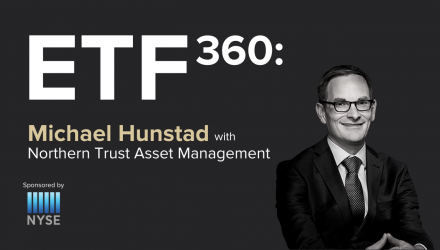For this week’s episode of ETF 360, ETF Trends CEO Tom Lydon and CIO Dave Nadig spoke with Michael Hunstad, PhD, Head of Quantitative Strategies for Northern Trust Asset Management, about their outlook factors and how to take advantage of the current economic climate.
Watch the Full ETF 360 Episode Here:
As one who spends a lot of time analyzing many factors and looking at the current recovery state, Hunstad speaks to how size and value are a big part of what he likes in the factor space. With that in mind, ETFs, including the FlexShares Morningstar US Market Factor Tilt Index Fund (TILT) and the FlexShares Morningstar Developed Markets ex-US Factor Tilt Index Fund (TLTD), are poised to do very well in the U.S. and the international space. There are a few reasons for this.
Historically, looking at the macro picture during recovery tends to be the prime time for the size and value factors. The stocks tend to be very depressed in the perceiving contraction. Coming out of that contraction, they tend to do quite well. From an interest rate perspective, things also look very good.
“When they have a situation that we’re in right now of a bare steepening yield curve,” Hunstad explains, “You generally have a positive outlook on longer-term growth, and not a lot of risk of that central bank engineered contraction. That’s very good for both the size and the value factors.”
Sustained Factor Rotation
Looking at this current version of factor rotation, Hunstad explains that it is all about what’s going on at the particular moment. All factors can and do go through sustained cycles. That is why one gets paid for taking factor exposure. “The wrist premium is predicated on the cyclicality,” Hunstad adds, which is being recognized more and more by the industry.
Hunstad continues, “It’s also important to recognize that factors are really two things. In one sense, it’s a great buy-and-hold strategy. Over the long term, factor strategies provide some very good risk-adjusted returns, especially relative to cap-weighted benchmarks. Right now, what’s even better, is that over the short run, factors provide what I’ll call granularity, meaning that you can take an equity market, break it into pieces, and that allows for not only more choice, but these pieces behave very differently in different scenarios. So, they are an excellent tool to express your macroeconomic view.”
This is not about rethinking asset allocation for investors. Really, it’s just about fulfillment and taking those factors in the right combination to express an investor’s macro views.
Looking at inflation, which is affecting gas and commodities prices, Hunstad explains how Northern Trusts’ view is that it will remain in relative check for the foreseeable future. That being said, it’s understood that there are factors that have different performance and different inflation and interest rate regimes. Additionally, defensive factors trying to fight inflation like low volatility tend to do well. ETFs such as the FlexShares US Quality Low Volatility Index Fund (QLV) and the FlexShares Quality Dividend Index Fund (QDF) are poised to outperform.
Watch Michael discuss more on factors from our recent webcast, now on-demand.
For more ETF 360 videos, visit our ETF 360 Channel.
